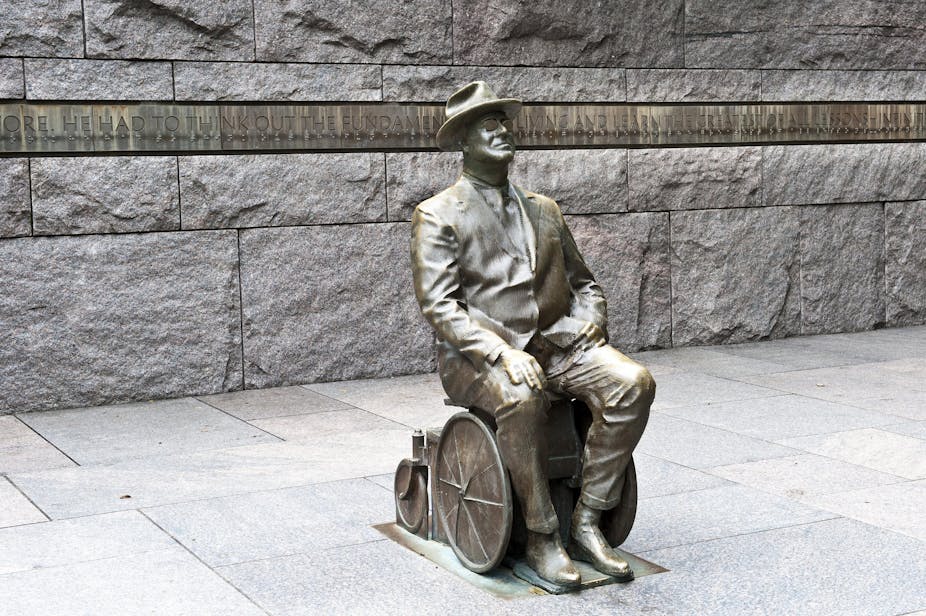In July 1990, President George H W Bush signed the Americans with Disabilities Act (ADA) into law in an action that “gave voice to the nation’s highest ideals.”
As we celebrate 25 years of ADA, we can see the significance of this law. The ADA challenged discrimination and helped remove many barriers, so people with disabilities could lead independent lives.
Today, there are roughly 56.7 million Americans, comprising 19% of the civilian population, with some form of disability, who are able to participate in mainstream society.
More than 700,000 students are enrolled in American public and private colleges and universities with documented disabilities including dyslexia, attention deficit/hyperactivity disorder (ADD/ADHD), sensory and mobility issues, mental illness, and health impairments.
But what is important to note is that the promise of ADA cannot be fulfilled unless those without disabilities act on its “clear, strong, consistent and enforceable standards.”
In my work as an experienced special educator, I have observed allies for people with disabilities across the country among students, faculty and administrators who recognize their role in fulfilling this promise.
So how are they advocating for people with disabilities on their college campuses? They are creating change by sponsoring inclusive organizations, teaching to specific learning needs and making campus policies more equitable.
A proclamation of emancipation
The ADA was brought in to ensure that people with disabilities get equal opportunities to fully participate in all aspects of community life, to live independently and to achieve economic self-sufficiency through the removal of barriers that prevent their meaningful inclusion in American life.
The ADA builds on 20 years of disability-specific legislation to eliminate the historic and pervasive isolation and segregation of Americans with disabilities. Before that, they were viewed as objects of pity, unable to work, go to school or live on their own.

The ADA altered this view by making buildings, transportation and services change so people with disabilities could participate.
Former Senator Tom Harkin, the chief sponsor of the ADA in Congress, referred to the law as the “20th century emancipation proclamation for people with disabilities.”
In 2008, new amendments to the ADA broadened the standard used to define a disability and extended protections to individuals with substantial limitations in a variety of major life activities including reading, concentrating and working.
The amendments also extended protections to those using a variety of supports such as cochlear implants, hearing aids and prosthetics.
In short, the ADA is not just about people with disabilities; it is about society at large. Ensuring equity, access and inclusion is a shared responsibility.
What has changed on campus
So, how are some of these changes reflected in today’s society? I see this every day on our campus: students and faculty using wheelchairs, accessible e-readers for those with low vision, sign language interpreters and other technologies that allow people to learn and to work.
As an instructor, I get help from the campus disability resource center to make sure I provide reasonable instructional accommodations in my classes, such as repeating or clarifying directions, or providing a note-taker, to students who need them.
Today’s undergraduates grew up in a post-ADA world where people with disabilities are expected to be included in, not segregated from, campus life. Many attended elementary and secondary schools alongside students with disabilities.
They are used to interacting in classes, clubs and community activities with friends and peers whose disabilities are just a part of life.
Early experiences have prepared these young adults to interact with increasing numbers of people with disabilities on campus. About 11% of college students have documented disabilities. Their full-time enrollment grew by 45% and part-time enrollment by 26% between 2000 and 2010. There are also about 250,000 higher education faculty members who have disabilities.
College leaders use strategies such as universal design and disability education to prevent discrimination against students and employees.
The concept of universal design means making things accessible and desirable to as many people as possible. For example, curb-cuts in the sidewalk were made for wheelchair users, but are used by everyone.
Architects use principles of universal design in building dormitories, classrooms and labs.
Universal design also applies to curriculum materials and teaching methods, such as presenting content and encouraging students to participate and respond to instruction in a variety of ways.
Programs in disability education and disability studies promote campus awareness about the experiences of people with disabilities and advocacy for social change. Courses can be taken at most universities to reduce the stigma still associated with disabilities.
On my campus at the University of Florida, students from different fields, including business, design, engineering, nursing, education, prelaw and medicine, enroll in the Disabilities in Society minor so they will be prepared to interact successfully with future coworkers, customers and neighbors with disabilities.
Way forward
However, despite these 25 years of advocacy, for many Americans with disabilities, equity and inclusion are still out of reach. And more needs to be done to fulfill the promise of the law.
Stigma and stereotypes are still perpetuated on college campuses, where students with disabilities tend to leave school after two years and graduate at half the rate of their classmates. They are also employed at half the rate of workers their own age who do not have disabilities.
Up to now, the most common experience of people with disabilities has been discrimination. Perhaps the greatest success of the ADA would be that discrimination would no longer be a shared experience in the future.

